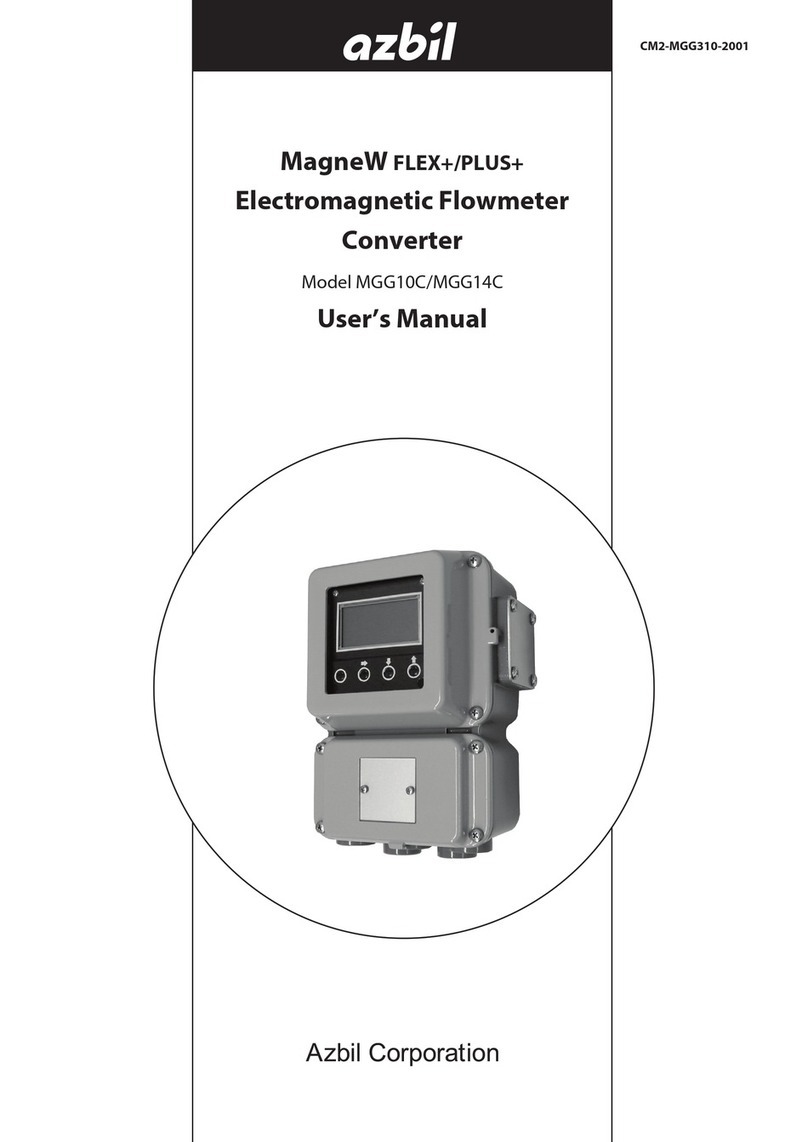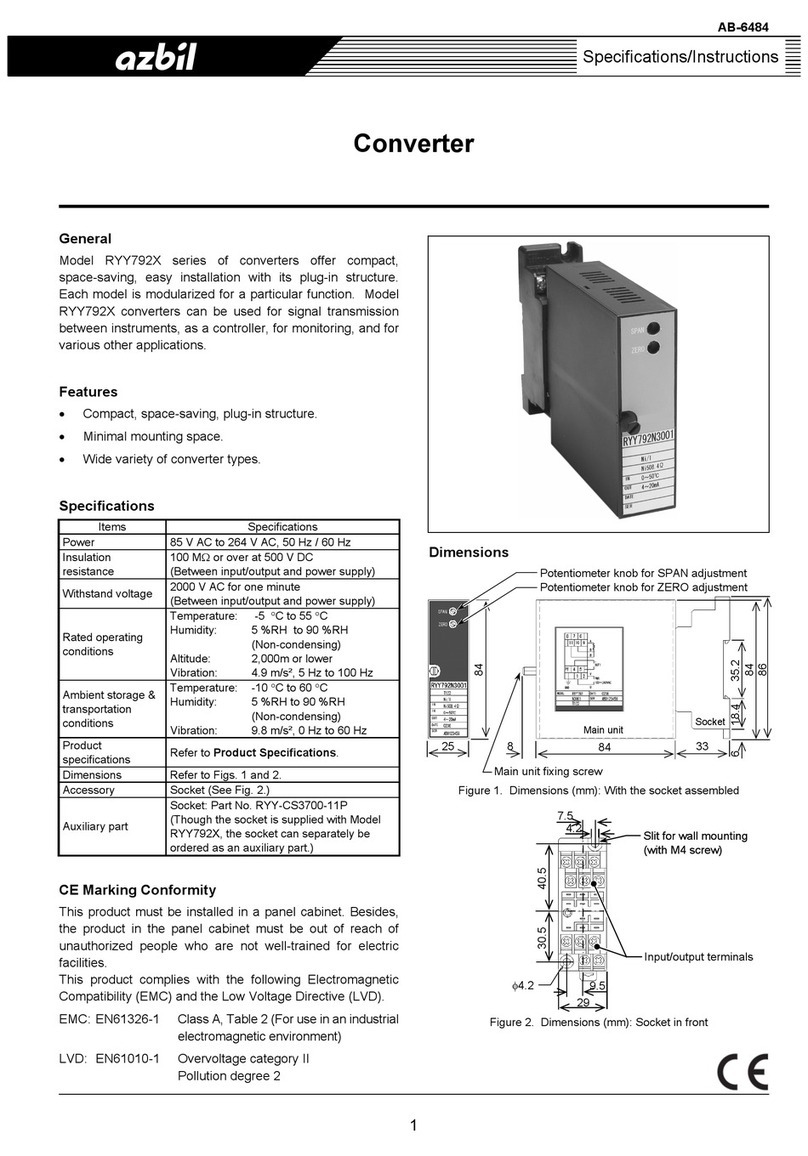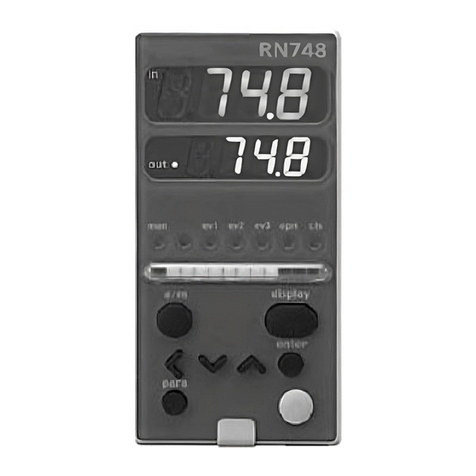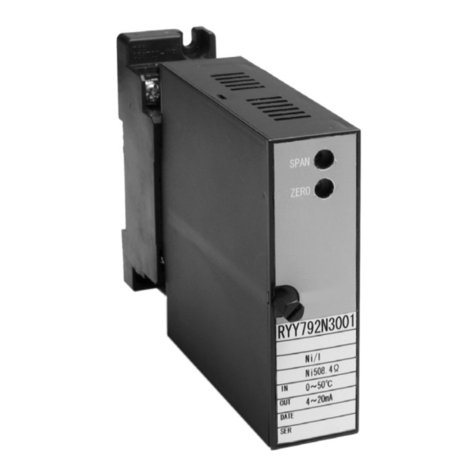
KUX113 - Field-Type I/P Converter 2-1
Azbil Corporation
Chapter 2 : Specifications
2-1 : Performance Specifications
Table 2-1 Performance specifications
Item Specifications
Input signal 4 to 20mA DC (Maximum allowable current approx.
30mA.)
Input resistance 250 ohms maximum
Output signal 20 to 100 kPa, 3 to 15 psi, 0.2 to 1.0 bar, 0.2 to 1.0 kgf/cm2
(Maximum allowable pressure 200kPa)
Air supply pressure 140 kPa {1.4 kgf/cm2} ±10%
Air consumption 4 "/min(N) (With output 50% balanced)
Maximum air supply capacity 110 "/min(N)
Maximum air exhaust capacity 110 "/min(N)
Minimum load capacity I.D. 4 mm copper tube × 3 m + 20 cc
AIr piping connections Rc1/4, 1/4NPT internal thread
Electrical conduit connection G1/2 internal thread
Material of major components Aluminum alloy
Operating temperature range Waterproof, dust proof type: -30 to +80°C
Flame-proof type explosionproof type: -10 to +70°C
Intrinsic-safety explosionproof type: -10 to +60°C
Operating humidity range 10 to 90% RH
Accuracy ± 0.5% F.S.
Linearity
(with reference to zero)
± 0.2% F.S.
Hysteresis error <0.5% F.S.
Reproducibility <0.4% F.S.
Dead band <0.05% F.S.
Temperature effect Zero shift: ±3% F.S. /30°C (Maximum)
Span shift: ±2% F.S. /30°C (Maximum)
Mounting 2-inch pipe (Horizontal of vertical)
Net weight Approx. 3 kg
Finish and color Finish: Acrylic baked finish
Color: Case; Dark beige, Cover; Black PPS resin, Termi-
nal box cover; Light beige
Construction Waterproof, dust proof type: JIS C 0920 Watertight, JIS F
8001 Class 3 Splashproof
Flame-proof type explosionproof type: JIS C 0903, d2G4
(Operating temperature -10 to +70°C)
Intrinsic-safety explosionproof type: JIS C 0903, i3aG5
(Operating temperature: -10 to +60°C, signal power sup-
ply: 23 to 27.5V DC)
































